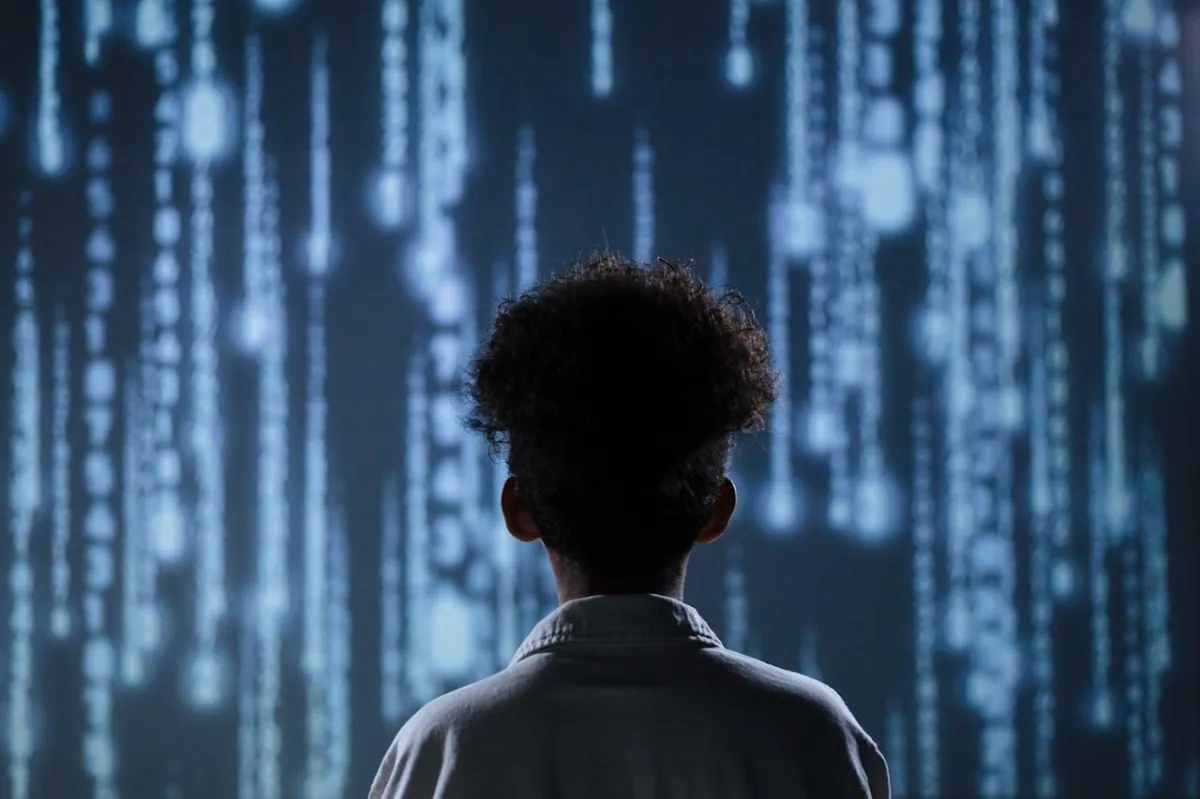Our Latest Blog Posts!

Cybersecurity Wake-Up Call: The Deepfake Threat You Can't Ignore!
Cybersecurity Wake-Up Call: The Deepfake Threat You Can't Ignore!
Deepfake technology is changing the way people see threats online. It is now easier than ever for attackers to create fake videos and voices that look and sound real. Even people who are careful can be fooled, making businesses and individuals more vulnerable to new kinds of scams.
Some companies are starting to fight back with new tools, like simple headsets that help spot a fake. But not everyone is ready or willing to invest in better protection. As deepfakes get more common, it becomes even more important to understand how these threats work and what can be done to stop them.
Key Takeaways
Deepfakes are now easy to create and hard to spot.
Many companies are not prepared for the risks deepfakes bring.
Simple new tools can help protect against deepfake attacks.
Growth of Deepfake Security Risks
Methods Behind Deepfake Creation
Deepfakes are made using software that copies someone's face and voice. The process usually starts with a few minutes of video of the person who is being copied. The program finds the target's face, matches the details, and then moves and blends their features to look as real as possible.
Attackers use a strong graphics card, such as a Ryzen 7800 XT, to run these programs smoothly. Most of the time, only one or two powerful cards are needed. The software finds the person's face through a camera, changes it, and animates it to match the target. This makes it hard to tell the difference between a real person and a deepfake.
How Easy It Is to Get Deepfake Software
Deepfake tools can be found online for free and are often open source. This means anyone can download and use them without paying. With a computer that costs about $5,000 to $6,000, someone can run deepfake software that fools most people.
Programs like "DeepFace Live" let users hook up any camera to make real-time deepfakes. All it takes is some basic hardware and a short video of the target. In a matter of minutes, someone can copy a face and a voice, making social engineering attacks much easier.
Requirement Details Cost $5,000 to $6,000 Hardware Needed 1–2 high-end GPUs Software Free and open source Data Needed 2–3 minutes of face video Setup Time A few minutes
Notable Recent Deepfake Attacks
There have been reports of deepfake attacks leading to major losses. For example, one incident involved a bank in Hong Kong where attackers faked a video call with an executive. This allowed them to steal about $25 million.
Another case involved someone pretending to be a famous actor during an online conversation, which tricked a person into believing the celebrity was real. Deepfake scams have even targeted the elderly by making them believe their loved ones or celebrities are contacting them.
Deepfakes are now being used to trick both businesses and individuals. Attackers often pose as CEOs or trusted people in video calls asking for money or information. This method makes it much harder to keep data and money safe, showing how real and pressing deepfake threats are today.
How It Affects Companies and People
Dangers of Fake Leader Tricks
When someone uses deepfake technology to pretend to be a company leader, it can cause serious problems. Attackers can join video meetings looking and sounding just like the real CEO or manager. This makes it hard for staff to know who they are really talking to.
Fake leaders can use these tricks to trick workers into sharing private information or giving away money. Even people who know the real leader may get fooled because the technology is fast and realistic.
New Ways Criminals Steal and Trick
Deepfakes have made it much easier for criminals to run money scams or fool others to get what they want. These attacks don’t just use videos—sometimes, voice and emails are used too.
Attackers can use free and open-source software with a good enough computer and only a few minutes of video or audio of their target. Some banks have already lost millions to these types of attacks. Even families can be tricked when the scammer copies a loved one's face or voice.
Common Targets:
Company executives
Bank employees
Elderly people
Regular workers
Weak Spots in Current Security
Many companies do not invest enough in cybersecurity. Some even use very basic protection or leave important safety steps out completely. This is like locking a door but leaving the key in the lock.
Most current systems are not ready for deepfakes. Attackers with cheap hardware can quickly make a very realistic fake. A simple, low-tech device can help, but many companies haven’t tried or don’t know about these new defenses.
Weakness Risk Lack of cybersecurity staff Easier for attackers to get inside systems Little training Workers may not spot fake videos or requests Basic safeguards Unable to deal with advanced deepfake tricks
Transforming Deepfake Security with Reality Anor
Alex Hughman’s Strategy
Alex Hughman, the founder of Reality Anor, takes a direct approach to stopping deepfake attacks. He noticed that many companies underestimate the risks of deepfakes and do not invest enough in protection. Instead of using expensive and complex systems, he developed a simple headset that works as a practical solution for businesses and individuals facing deepfake threats.
How the Headset Works
The headset uses built-in magnifying lenses to disrupt key steps in deepfake technology. When someone tries to use software to match and animate a person’s face, the headset makes this process much harder. The magnification and design throw off the software’s ability to align and merge facial features accurately.
Feature Purpose Magnifying lenses Distort facial data capture Simple hardware Easy to use and affordable Alignment interference Blocks face-mapping by A.I.
This device doesn’t rely on advanced computers or artificial intelligence. Its main goal is to stop attackers from creating a believable fake in the first place.
Stopping A.I. Face Matching
Most deepfake tools depend on collecting just a couple of minutes of a person’s voice and face. The software then matches and merges these images to create a new, realistic video. The headset prevents this by making sure the face isn’t aligned or animated in a way that software expects.
Instead, it introduces problems in “face alignment.” This makes it almost impossible for deepfake programs to produce a convincing copy. As a result, potential attacks that depend on perfect face-matching are blocked before they can even start.
Obstacles in Implementing Cybersecurity Tools
Common Adoption Challenges
Many businesses struggle to keep up with new security threats, especially with the rise of deep fakes. Some companies believe they do not need to spend much on cybersecurity. This mindset can leave them exposed to attacks. Even basic safety steps are sometimes ignored, like not using strong passwords or leaving key systems vulnerable.
Companies often use weak solutions, such as "locking the door but leaving the key in it." These actions create easy opportunities for attackers.
Challenge Description Lack of investment Not enough resources spent on security Low awareness Underestimating current cyber risks Weak policies Poor protection practices Outdated technology Using old or ineffective tools
Role of Technical and Security Staff
Having a dedicated IT department and trained security teams is essential. These teams help protect the business and watch for new types of attacks, including deep fakes and social engineering tricks. Without skilled staff, organizations are much more likely to fall victim to scams or data theft.
Key reasons to have IT and security experts:
Monitor systems and stop threats early
Keep company policies up to date
Teach workers about cyber risks
Respond quickly to incidents
Putting the right people in place is just as important as having the right technology. Proper staffing makes it much harder for attackers to trick or harm the company.
The Future of Cyber Threat Protection
Cyber threats are becoming harder to spot as technology gets better at creating fake identities. Attackers can now use free, open-source software and high-powered GPUs to make deep fake videos and voices that are almost impossible to tell apart from real people. With just a few minutes of someone's face and voice, criminals can pretend to be trusted colleagues, company leaders, or even celebrities.
Many businesses are not prepared for these new risks. Investing in strong cyber security is as basic as locking your front door, but some companies still leave themselves open by using weak protections or not hiring enough IT and security staff.
Deep fake attacks can target anyone, from top executives to regular employees. The danger isn't just about stealing money; it's also about gaining access to private company data. Social engineering, when attackers use fake identities to trick people, is now easier and more believable with deep fakes.
Challenge Impact Deep fake technology Makes scams more convincing Weak security Increases risk of data theft or fraud Lack of awareness Leaves companies open to easy attacks Outdated precautions Not enough to stop new threats
Simple, practical tools can make a big difference. For example, some devices are designed to disrupt how deep fake software copies and animates your face. By making it harder for attackers to create a perfect copy, these solutions help protect people and companies from fraud.
Staying alert and updating security strategies are key steps for facing future cyber threats.
Address
2618 San Miguel Drive
Newport Beach, CA, 92660
Tel: 949-257-6998
Address
Newport Beach, CA, 92660
Tel: 949.257.6998
Follow Us
© 2025 all rights reserved. Created by Growth Generators. Privacy | SMS Disclosure.


